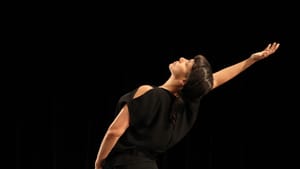Stay in the Loop
BSR publishes on a weekly schedule, with an email newsletter every Wednesday and Thursday morning. There’s no paywall, and subscribing is always free.
Other ways of being
Intercultural Journeys presents Rosy Simas Danse’s ‘Weave’

Rosy Simas Danse draws upon connection and collaboration in Weave, a work inviting viewers to consider alternative ways of being with nature and other people. Choreographer Rosy Simas identifies as a Native feminist artist, and her statement on Weave emphasizes cooperation rather than the hierarchy that is characteristic of patriarchal Anglo cultures.
Simas describes the piece as the product of “deep collaboration with the performers, designers, our production assistant, and the writers,” all of whom made vital contributions. This sense of intentional connecting and valuing diverse perspectives extends to the audience as Simas continues, “Regardless of the multiple barriers placed in front of us to be all together, we are here to share Weave with you.”
Challenging boundaries
Much is woven together in Weave: the performance incorporates movement, image, and sound, but also memory, feeling, history, and the natural world. David Treuer’s new book The Heartbeat of Wounded Knee: Native America from 1890 to the Present was on my mind as I watched, finding parallels between Treuer’s challenge to the myth of the vanishing Indian and Weave’s vibrant 21st-century treatment of Indigenous traditions and aesthetics.
Right away, Weave challenged boundaries between nature and civilization, audience and performer, and dance and ritual as outdoor sounds played on portable speakers under electric lights. The performance began in the lobby outside the theater, where Zoë Klein, Sam Aros Mitchell, Kimya Imani Jackson, Jungwoong Kim, Mehhan Abdel-Moneim, and Aya Razzaz slowly moved through the crowd to the sound of crickets. The skill with which the dancers moved so deliberately belied its difficulty. I was impressed with their remarkable control and sterling focus, especially as they came very close to audience members.
But combined with Weave’s unusual opening, this start in the lobby created confusion among viewers. Despite a preshow announcement from Intercultural Journeys curator Alex Shaw, nobody seemed sure of where to go or what was happening. Then, when the house doors opened and the dancers continued their glacially paced procession toward the stage, there was a hesitant pause until everyone followed the few daring souls who stepped in and took their seats.
Grass and water
The opening procession suggested a ceremony, and as Weave continued it used movement and imagery to connect ritual with nature. A ghostly projection of grass waved on a screen behind the stage where Simas matched her arm movements to the soundscape. She pulled her arms apart and brought them together in time with the sound of chirping, as if conducting a symphony of insects. Then Simas moved her fingers as if plucking a string or weaving strands.
The most memorable sequence of Weave portrayed a dancing river. Watery sounds played and waves appeared on the screen as dancers in silvery costumes moved like fish. One dancer repeatedly craned her neck like a surfacing swimmer, and others seemed to struggle against the current like salmon swimming upstream. Simas moved her fingers in waving motions as the tide cast a dancing school of fish from one side of the stage to the other.
Human voices
Two sections incorporated dialogue, recorded and live. What began as an indistinguishable din of human voices gradually resolved into a conversation between two people in an Indigenous language. Simas performed a solo, sinking again and again into a deep plié with bent knees. I saw a graceful version of the yoga asana called "goddess pose," which unites femininity with strength. Next, the other dancers entered, speaking as they moved. Parts of Weave seemed to be improvised, especially this one. Like the earlier recording, it was hard initially to discern what was being said and by whom. Eventually, I realized the dancers were narrating their movements across the stage, saying things like “under” and “overhead” as they reached and spun.
This was an interesting concept, though it lacked a clear connection to the rest of Weave. It also took longer than necessary, like several other sequences. The slow pace of much of the movement contributed to this. Yet even though Weave appeared to drag, I know my perception was shaped by conventions and expectations from the dominant culture and its non-Indigenous ways of being and creating.
Weave was presented by Intercultural Journeys (IJ), an organization devoted to fostering peace and understanding through the performing arts. IJ’s mission and programming (taking place at venues across the city) offer opportunities for the kinds of connections Weave emphasizes. Next up on April 12, 2019, is a concert with traditional Japanese instruments. Weave was a terrific vehicle for IJ’s mission, promoting interdisciplinary approaches to understanding relationships among cultures, humans, and animals. Instead of providing a story or specific meaning, Rosy Simas Danse’s nonnarrative piece provided an arc in which we may see our ties to one another and the world around us.
What, When, Where
Weave. Choreography by Rosy Simas. Rosy Simas Danse; presented by Intercultural Journeys. March 8 and 9, 2019, at the Performance Garage, 1515 Brandywine Street, Philadelphia. (267) 753-0757 or interculturaljourneys.org.
The Performance Garage offers a ramp for wheelchair users upon request, and one of its gender-neutral bathrooms is ADA-accessible.
Sign up for our newsletter
All of the week's new articles, all in one place. Sign up for the free weekly BSR newsletters, and don't miss a conversation.
 Melissa Strong
Melissa Strong